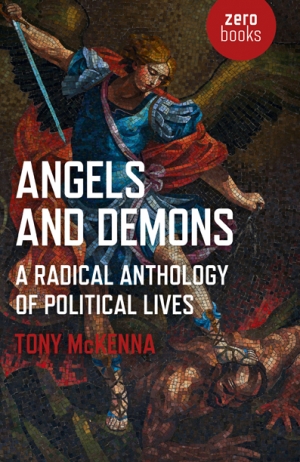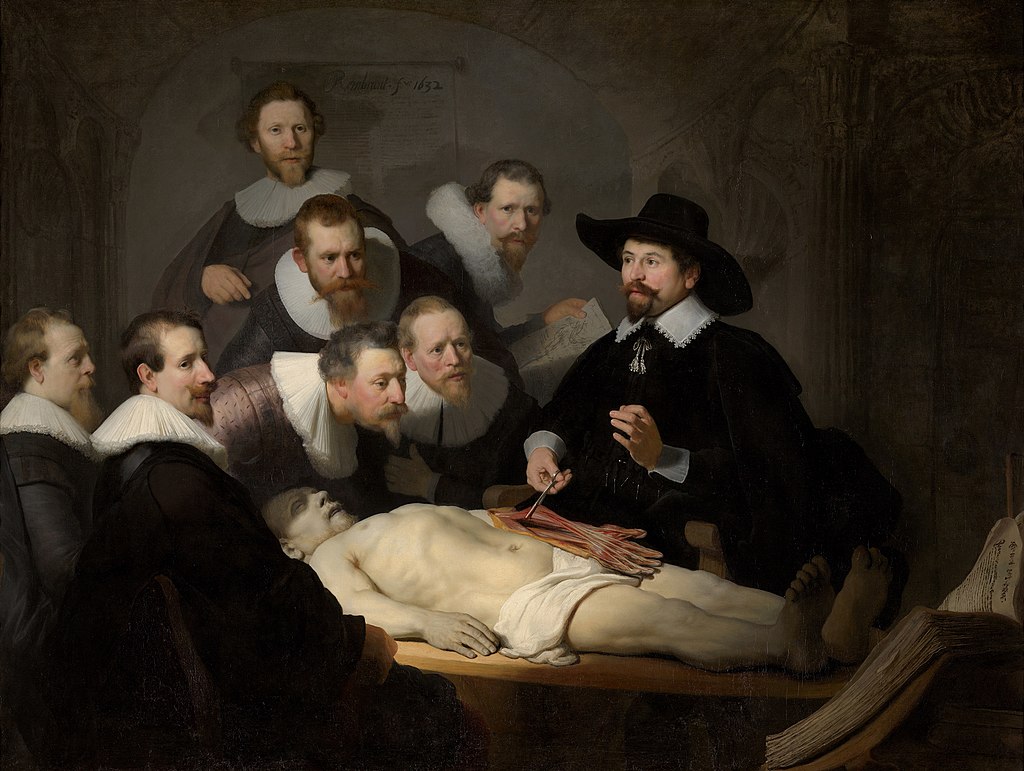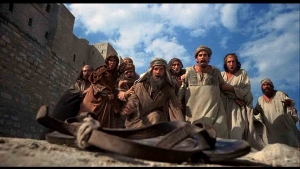
Angels and Demons: one must subdue the other
Sean Ledwith reviews Angels and Demons, by Tony McKenna, a collection of essays on artists, writers and politicians written from a historical materialist perspective.
The role of the individual in history has been one of the perennial debates throughout the development of Marxist theory. Marx and Engels in the nineteenth century were keen to dissociate themselves from the ‘great man view of history’ that had characterised much of bourgeois scholarship up to that point. The defining feature of historical materialism as an analytical tool in their hands was to transfer the focus of attention away from the actions and intentions of individuals, and onto the structural forces and relations of production that have combined to create a succession of modes of production across the millennia of human history.
At the same time, as revolutionary activists and not simply disinterested scholars, the founders stressed the ongoing importance of human agency and the capacity of individuals to operate with a degree of choice, albeit within the constraints of these subterranean processes. This fine balance between structure and agency is neatly encapsulated in a celebrated passage from Marx’s Eighteenth Brumaire of Louis Bonaparte:
Men make their own history, but they do not make it as they please; they do not make it under self-selected circumstances, but under circumstances existing already, given and transmitted from the past.
Of course, subsequent generations of thinkers, seeking to follow the founders’ example, have not always succeeded in reproducing both elements of this conceptual tension; oscillating at times between the voluntarism associated with Sartre and others, and the subject-less paradigm constructed most intricately by Althusser.
Anyone looking for a modern attempt to recreate the dialectical balance between the individual and wider social forces in the spirit of Marx and Engels should refer to this highly readable collection of essays by Tony McKenna. The author impressively surveys the lives of a number of individuals across the fields of politics, philosophy and the arts who have had a major impact – for good or ill – on human affairs.

Nicholas II
McKenna takes his theoretical cue from a passage in Trotsky’s seminal History of the Russian Revolution in which the character of Nicholas II is portrayed as an amalgam of the subjective and objective:
In Trotsky’s account, the personal and the political achieve a harmonious but terrible synthesis, for in the person of the last Tsar is embodied all the decadence, fatality, pettiness, self-deception, brass ignorance, denial and hopelessness of a historical tendency which has entered into an inevitable, mortal freefall. (3)
Developing the template provided by Trotsky for a distinctively Marxist approach to biography, the author persuasively argues that a nuanced version of historical materialism, eschewing both crude determinism and naïve individualism, can creatively identify the strands that link the lives of the one with the many. The personalities he discusses are not reducible to mere abstract cyphers, the personal representatives of mechanical, anonymous historical forces, but rather their art and activity, their interests and individuality, only resonates its full uniqueness and meaning in the context of the historical epoch, and the underlying social and political contradictions which set the basis for it. (6)
As a formulation of the Marxist conception of the role of the individual in history, McKenna here provides a valuable new iteration of the analyses of Marx, Trotsky and others in previous eras.
The author divides his ten subjects into the two categories alluded to in the title. This classification follows a method that in more familiar terms consists of radicals and reactionaries. In the former camp, we find Victor Hugo, Hugo Chavez, Rembrandt, Andrea Dworkin, William Blake and Jeremy Corbyn. The ‘Demons’ team is made up of Christopher Hitchens, Schopenhauer, Hillary Clinton and Trump.
It would be difficult to think of more diverse and anomalous assortment of case studies for McKenna’s thesis that historical materialism can usefully contextualise the personal with the political! However, he deploys with virtuosity a remarkable grasp of the breadth of cultural, economic and political forces at work in the lives of these personalities. Anyone interested in any of the above figures will find their understanding enhanced by McKenna‘s sophisticated delineation of how the respective subject’s ideology was shaped by the dynamics of the age.
The only slight drawback of the author’s selection is that the personalities are not analysed in chronological order. The reader for example can find herself rewinding from Hitchens in the twentieth century to Rembrandt in the seventeenth, and similarly from Dworkin in the twentieth to Blake in the eighteenth. McKenna perceptively suggests the key to explications of individual psychology from a Marxist perceptive should comprehend how major figures mediate most profoundly the most significant contradictions within the capitalist order at different stages in its development. (15)
It might have been preferable, therefore, if each study more evidently reflected a step-change in the operations of the rule of capital from the dawn of the bourgeois revolutions to today’s seemingly remorseless neoliberal hegemony. However, this consideration does not detract from the elegance and power of McKenna’s expositions.
The emphasis on contradictions in an individual personality is the fundamental insight that lies at the heart of McKenna’s methodology. Again, in this aspect he follows in the tradition of some of the best thinkers in the Marxist tradition. Gramsci, in his Prison Notebooks of the 1930s, drew attention to ‘contradictory consciousness’ as one of the symptoms of alienation in the mental framework of every subject living under the role of capital.
Voloshinov, in the previous decade, explored the phenomenon of ‘multi-voicedness’ and the manner in which the consciousness of an individual can simultaneously contain ideological input from a range of sources, some of which may be conflicting. Likewise, the author here contends that the key to unlocking human personality is the way in which the contradictions of the age are manifested in the unique experience of every person. The result of this methodology is a sequence of portraits that fulfils Gramsci’s guidance on how biography in the tradition of historical materialism can produce insights that are superior to its bourgeois counterpart:
They never let you have an immediate, direct, animated sense of the lives of Tom, Dick and Harry. If you are not able to understand real individuals, you are not able to understand what is universal and general.

Rembrandt, Self-portrait at the age of 63
In the moving chapter on Rembrandt, McKenna elucidates how the painter’s sublime genius lay in his ability to tune into the contradictions of the world’s first bourgeois revolution as the newly born Dutch capitalist state threw off the yoke of the Spanish Empire at the turn of the seventeenth century:
For he channelled this dualism in an art which attains a new depth of individuality and interority, illuminating the flickering shadows of the soul, while at the same time possessing the kind of aesthetic integrity which was able to express the suffering of an age, allowing it to bleed into the backdrop of his paintings. (96)

McKenna recounts how many of Rembrandt’s portraits of the 1630s, such as ‘The Prodigal Son in the Brothel’, are of the moneyed bourgeoisie whose ‘exuberant political freedoms' (89) are expressed in the lavish and salubrious scenes depicted around the characters. The optimism and self-confidence of an embryonic ruling class that is taking a torch to the decaying carcass of feudalism is almost palpable.

The greatness of Rembrandt, however, is that the artist notes, amid the surging power of the Dutch bourgeoisie, a sense that its hegemony will be built not on the abolition of exploitation but only a new type of exploitation. Describing the iconic ‘Anatomy Lesson of Dr Nicholas Tulp’, McKenna draws our attention to the attitude of the scientists looking down on the corpse in front of them: They see him only in terms of an object like any other, to be appropriated, to be carved up; as a means to enhance their own material and intellectual powers. (93)
This picture is conventionally interpreted as representing the humanism and idealism of the scientific revolution of the early modern age. With an appropriate lightness of touch, however, McKenna deploys a Marxist lens to re-imagine it as a portent of the calculated disinterest the capitalist class retains for the millions of subjects who labour in its name.
At no point does the author’s analysis relapse into a crude materialism that might see Rembrandt as the artist of the Dutch bourgeois revolution and little else. McKenna does not lose sight of the fact that the reason the artist remains phenomenally popular is that he addresses anxieties and concerns that continue to exercise the human imagination, and that probably always will.
For example, ‘The Slaughtered Ox’ from 1643 contains an enigmatic power that seemingly defies rational explanation. The image of a butchered bovine cadaver in a basement at first would appear to be an unlikely source of fascination. For McKenna, however, the painting brutally reminds us of the material reality of our existence as transient beings in a universe ultimately beyond our comprehension:
Rembrandt is making us aware that, ultimately, this is our destiny – that, each day, life crucifies us that little bit more and that little more slowly, through the sense of loss and suffering we must inevitably accumulate. (102)
If Rembrandt is rightly one of the eponymous angels of the collection, Christopher Hitchens as one of the most famous critics and polemicist of our age falls into the less desirable category. His championing of the calamitous Bush-Blair inspired invasion of Iraq in 2003 is probably the main reason Hitchens was suitably dubbed as a fallen angel in the eyes of many on the radical left. McKenna ultimately concurs with this damning verdict but does not elide over Hitchens’ undoubted qualities as a writer and is generous in acknowledging his subject’s stoical battle against cancer in the twilight of his life:
Hitchens had a wonderful facility with words. His literary flair surpasses that of his idol Orwell, in my view, in terms of its fluidity and grace…even in his later years, the increasingly rotund figure of this patrician journalist was in possession of a certain stoutly courage. (71-72)
Hitchens’ espousal of Western imperialism in his last decade can appear bizarrely incongruous in the light of his previous association with the revolutionary left. As McKenna observes, the most obvious explanation would be that ‘the allure of money and privilege no doubt played its part’. (70) But the author contends that a more productive line of thought is to trace the conflict that raged within Hitchens’ persona throughout his life between two contradictory impulses. On the one hand, the desire to shock the establishment, and on the other, the need to be part of it. In McKenna’s words:
The need to have it both ways, so to say-to be able to indulge the exhilarating frisson and enjoy the moral vitality which are the remits of the freedom-fighter, while simultaneously partaking in the silky confidences of the most famous and powerful; this was the central, elemental contradiction which fissured across Hitchens’ existence. (82)
Perhaps the moral of this particular life is that although contradictions are the essence of the human condition, they do not always play out without resolution. The aftermath of the 9/11 attacks forced Hitchens to decide whether he would decisively take the side of the oppressed or the oppressor. His total failure to comprehend Islamism as a distorted form of resistance to imperial hegemony led him into the welcoming arms of Cheney, Wolfowitz and the rest of the neocon cabal in Washington.
McKenna’s reflective adoption of a Marxist approach to psychology here highlights the advantage of not focusing on our interiority alone; but also perceiving how by events in the external world can force us to confront the contradictions within ourselves. The fiery fiasco of the ‘War on Terror’ forced Hitchens to face the paradoxes of his own existence – and he was found wanting.

McKenna’s closing chapter is a timely assessment of the leadership of Jeremy Corbyn. As the Tory government stumbles through the Brexit morass, the prospect of the Labour Leader walking through the black door of Number 10 is tantalisingly real. In the neatly titled ‘Chronicle of a Coup Foretold’ McKenna predicts that such a scenario would trigger a major crisis of the British state, in which the aspirations of millions of working-class people, long neglected by a venal elite, would be pitched against the centuries-old conservatism of the ruling class. Unlike the previous profiles in the book, McKenna does not detect any deep contradictions in Corbyn’s personality, and the author’s focus is more on a looming rupture in the wider body politic. In fact, it is fair to say that the Labour leader’s apparent lack of hidden agendas – conscious or otherwise – is the root of his remarkable appeal. Corbyn’s lack of complexity and personal ambition is a refreshing change from his recent predecessors in the post:
Jeremy Corbyn is a kind, decent, reasonable man who evinces a sense of faint distaste and aloofness to the more savage and Machiavellian manoeuvrings, which are so much a part of modern politics. (238)
Nevertheless, McKenna shrewdly cautions us that these qualities are eerily reminiscent of Salvador Allende, Chile’s doomed socialist Prime Minister of the early 1970s. Allende believed decency and reason would be enough to restrain the dark forces of military intervention that stood at his side in the last weeks of his administration. By the time he realised they were actually his deadliest enemies, it was too late. If Corbyn is not to suffer a similar fate in the future, the whole labour movement in the UK will need to realise there can be no common ground in the event of a clash between the ‘Angels and Demons’ – one must subdue the other.
Angels and Demons is available here.


